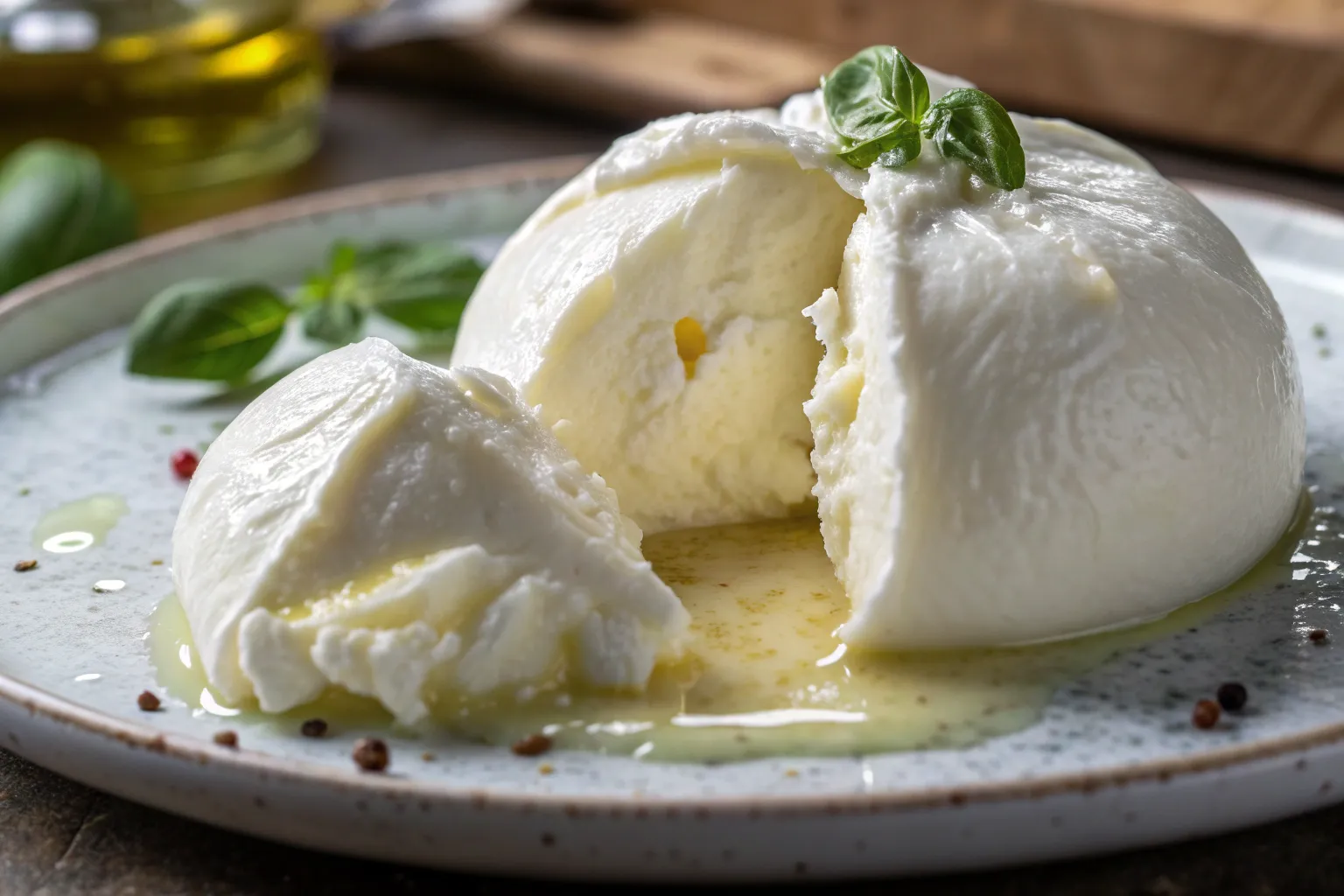Burrata Recipe
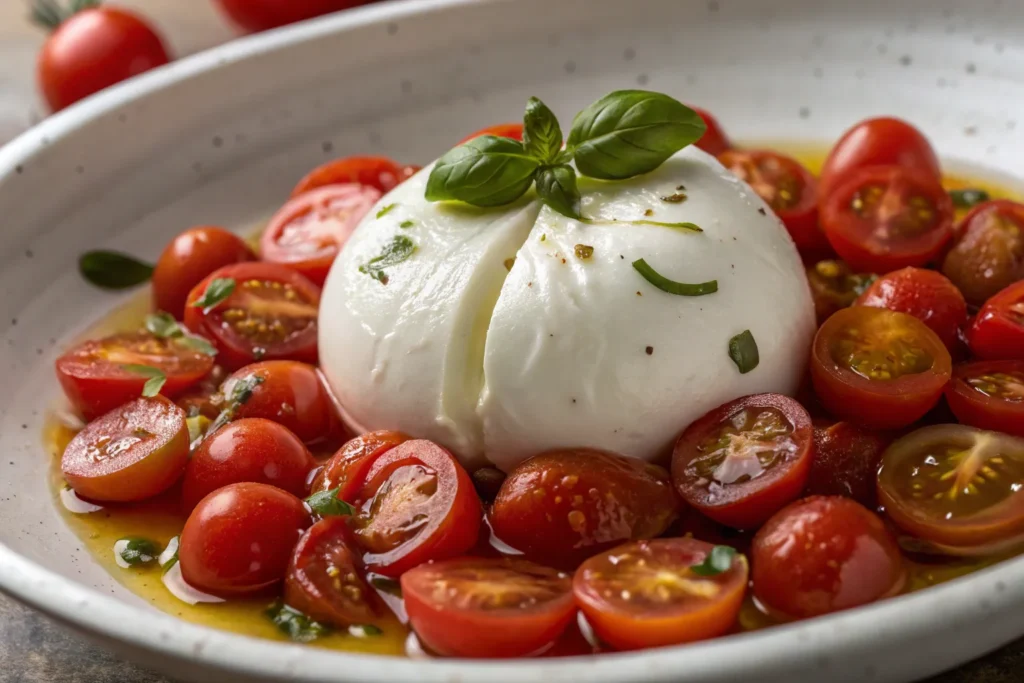
Burrata is a soft creamy cheese that offers a luxurious texture and a delicate fresh flavor. It is made from mozzarella on the outside and a rich creamy center inside which creates a smooth and silky experience with every bite. This recipe focuses on serving burrata in a simple yet elegant way so that its natural flavor stands out. It is perfect for light meals gatherings or refreshing appetizers.
Why You Will Love This Recipe
Burrata requires very little preparation which makes it easy to serve. It pairs beautifully with fresh tomatoes olive oil herbs and crusty bread. The flavor is clean simple and satisfying which makes it perfect for both everyday meals and special occasions. Its creamy texture adds elegance without effort.
Nutritional Info
Burrata provides protein and calcium from dairy along with healthy fats when paired with olive oil and avocado. It is richer than regular mozzarella due to the creamy center so it is best enjoyed in moderate portions. When paired with vegetables and whole grains it becomes part of a balanced and nourishing meal.
Time Taken
Preparation time 10 minutes.
No cooking required.
Ready to serve in minutes.
Ingredients
- Fresh burrata cheese
- Cherry or heirloom tomatoes
- Olive oil
- Salt
- Black pepper
- Fresh basil
- Optional balsamic glaze
- Crusty bread or toasted baguette slices
Instructions
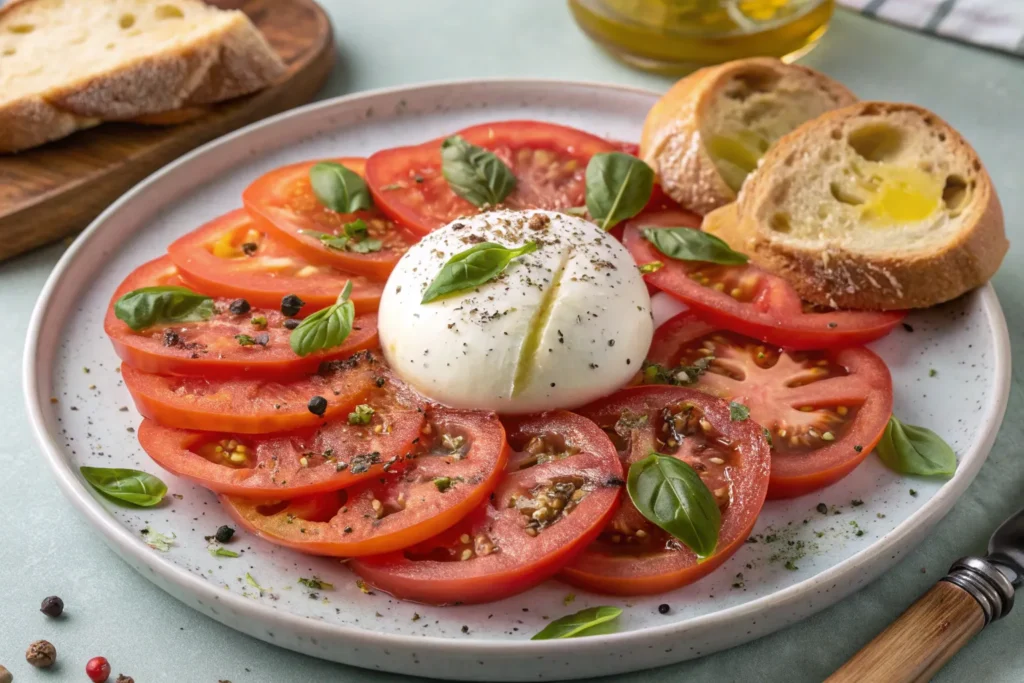
Begin by slicing the tomatoes and arranging them neatly on a serving plate to create a colorful foundation for the dish. Gently place the burrata ball in the center of the plate, taking care not to break its delicate outer layer. Drizzle a generous amount of olive oil over both the burrata and the tomatoes to enhance the flavor and soften the textures. Sprinkle a light touch of salt and black pepper to bring out the natural flavors of the ingredients. Add fresh basil leaves on top and around for a burst of aroma and freshness. Serve the dish with slices of bread so the creamy center of the burrata can be scooped and spread easily.
You Must Know
Burrata has a soft and delicate center, so it should be handled with care to avoid breaking it before serving. Allowing it to sit at room temperature for a few minutes helps the cheese soften slightly, which brings out its flavor and creates an ideal texture. This small step makes a noticeable difference in how smooth and enjoyable the burrata will taste.
Storage Tips
Burrata is best enjoyed fresh on the day it is opened because its texture and flavor are at their peak. If you need to store it, keep it submerged in its original liquid in the refrigerator and consume it within one to two days. Avoid freezing burrata because freezing destroys the smooth, creamy consistency that makes it special.
Ingredient Substitutions
You can replace the tomatoes with peaches or figs if you want a sweeter and more fruit-forward variation of the dish. If basil is unavailable, arugula or mint can be used to introduce a different herbal note. Olive oil may also be swapped with an infused herb oil to add more aroma and depth of flavor.
Serving Suggestions
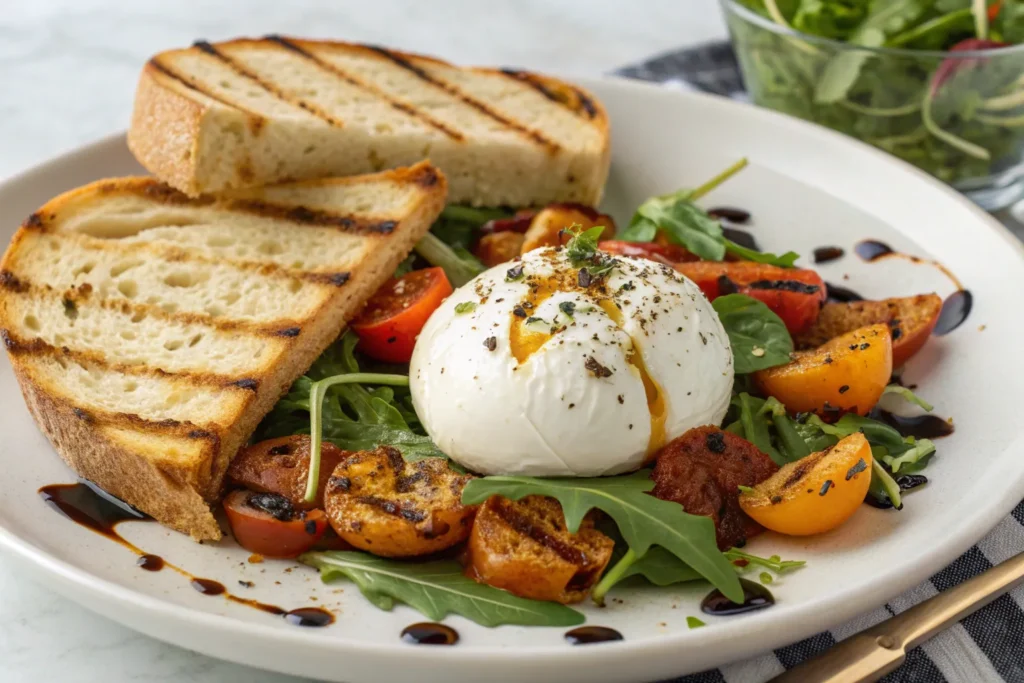
Serve burrata with grilled bread or slices of garlic toast to balance the creamy texture with warmth and crunch. It also pairs beautifully with roasted vegetables or a light green salad for a more complete meal. A thin drizzle of balsamic glaze adds a gentle sweetness and tang that complements the creaminess of the cheese.
Cultural and Historical Context
Burrata originates from Southern Italy where dairy farmers created it as a way to make use of leftover mozzarella curds and cream. Over time, it became beloved for its luxurious texture and the way it enhances simple ingredients. Today, burrata is appreciated worldwide for its elegance and its ability to elevate even the most basic combinations of produce and bread.
Seasonal Adaptations
In summer, burrata shines when paired with fresh tomatoes, peaches, or basil, capturing the essence of warm, sunny flavors. During colder months, it can be served with roasted squash, walnuts, and warm bread for a cozy and comforting presentation.
Success Stories
Many home cooks enjoy serving burrata because it appears sophisticated without requiring any complex cooking skills. Once people begin presenting it at meals or gatherings, it often becomes a regular favorite due to its simplicity, beauty, and rich taste.
Freezer Meal Conversion
Burrata itself should never be frozen because its creamy interior becomes grainy after thawing. However, elements such as tomatoes, bread, and herbs can be prepared or sliced ahead and stored separately, making assembly quick when needed.
Pro Tips
Use a high-quality olive oil because the flavor of the oil plays a major role in the final taste. Also, slice the tomatoes just before serving to maintain their juiciness and freshness.
Chef’s Special Tips
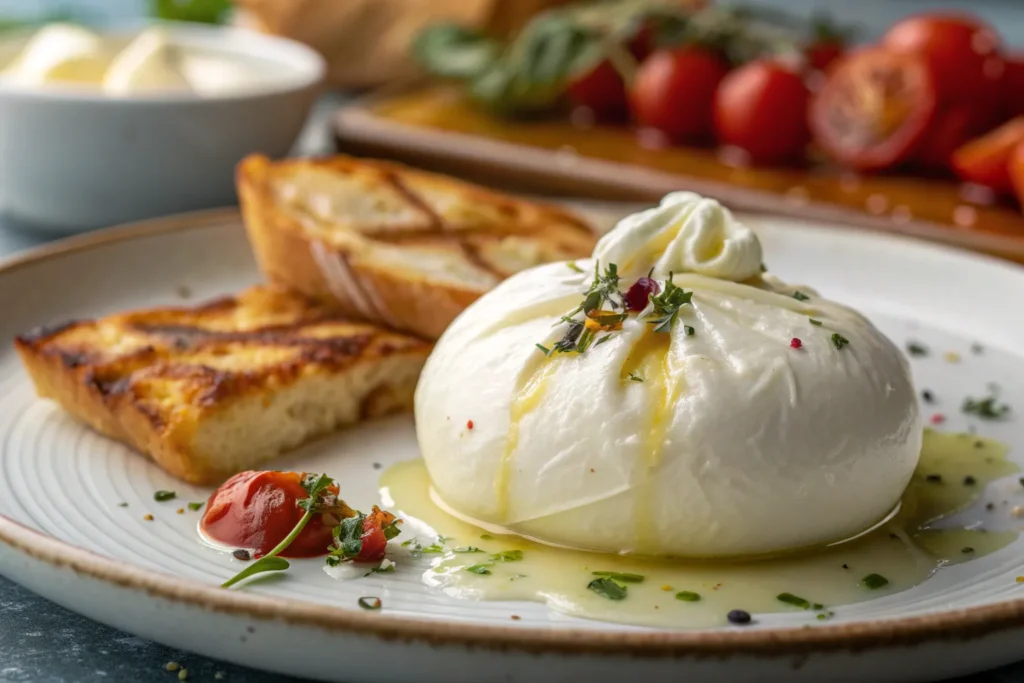
Warm the bread slightly before serving. The gentle heat contrasts beautifully with the cool creamy burrata, enhancing the overall eating experience and making every bite satisfying.
Conclusion
Burrata is a dish that proves elegance can be achieved with very few ingredients. It is fresh, smooth, and deeply satisfying, making it perfect for both everyday meals and special occasions. Try serving burrata soon to experience its simple beauty and share its comfort with someone you care about.

